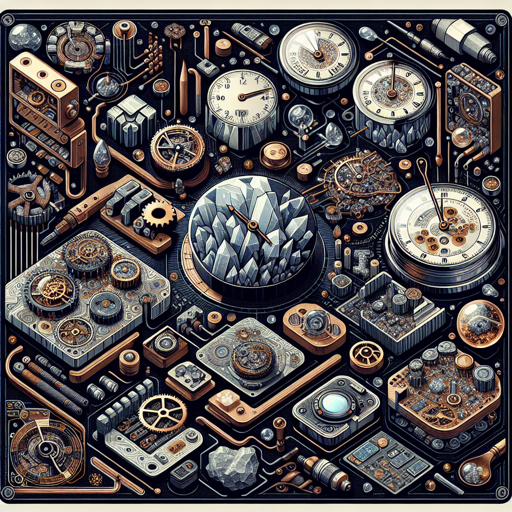Quartz: The Unsung Hero in Technology
Unveiling the pivotal role of quartz in modern electronics and watchmaking

Introduction
Quartz, one of the most abundant and diverse minerals on Earth, holds an unsung hero status in the realm of technology. This versatile mineral, beyond its beauty, plays a vital role in the functioning of numerous electronic devices and precision timepieces we use daily.
The Quartz Connection
Quartz, a crystalline form of Silicon Dioxide (SiO2), possesses a unique property called piezoelectricity. When pressure is applied to a quartz crystal, it generates an electrical voltage. Conversely, when an electrical voltage is applied, the crystal vibrates at a very precise frequency. This unique characteristic makes it an ideal component for electronic devices and timekeeping instruments.
Quartz in Electronics
Quartz crystals are integral to many electronic devices, including computers, radios, televisions, and mobile phones. These devices rely on quartz’s piezoelectric property to generate a stable and reliable frequency. Quartz crystals in electronic circuits, often referred to as “crystal oscillators,” help regulate the flow of electric charge, ensuring consistent performance.
| Devices | Role of Quartz |
|---|---|
| Mobile Phones | Frequency regulation in communication signals |
| Radios | Tuning and frequency control |
| Computers | Clock signal generation for synchronization |
| Televisions | Pixel illumination and frequency control |
Quartz in Watchmaking
The precision of quartz has also revolutionized the world of watchmaking. Quartz watches, introduced in the late 20th century, quickly surpassed mechanical watches in accuracy and affordability. These watches use a tiny quartz crystal, shaped like a tuning fork, that oscillates at a frequency of 32,768 times per second when an electric field is applied. This precise frequency is then divided down to give one pulse per second, providing the watch with its accurate timekeeping capability.
“Quartz, in its silent beauty, keeps our world in sync, one tick at a time.” — Unknown
External References
For a deeper understanding of quartz and its numerous applications, visit the Mineralogical Society of America’s website.
Conclusion
Whether it’s powering the device you’re reading this on or keeping time on your wristwatch, quartz’s role in technology is both vast and critical. Its unique properties have not only made our lives more convenient but also brought precision to the world of electronics and watchmaking. The ubiquity of quartz in technology is a testament to the profound ways in which Earth’s minerals shape our everyday lives.